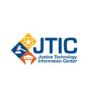This article is taken from the June 2017 issue of eTechBeat, published by the Justice Technology Information Center, a component of the National Law Enforcement and Corrections Technology Center System, a program of the National Institute of Justice, (800) 248-2742.
By Becky Lewis
TechBeat Magazine
When John Q. Public plans to buy a new car, he often starts by researching websites online.
When Lt. Fleet Manager plans to buy new cars for his law enforcement agency, he often starts by researching the current Michigan State Police’s Police Vehicle Evaluation Model Year report.
Every fall since 1975, the Michigan State Police (MSP) have evaluated patrol vehicles and published the results. Along the way they’ve added motorcycle evaluations, Internet publication and, starting in 1981, the sponsorship of the National Institute of Justice (NIJ) and the National Law Enforcement and Corrections Technology Center (NLECTC) System. Fleet administrators and other law enforcement administrators can, and do, use data from the evaluations to help inform their purchasing decisions.
Lt. Mike McCarthy of the MSP Training Division’s Precision Driving Unit says that MSP publishes and shares their evaluation data so that “first, fleet managers can see how the vehicles compare to one another and second, manufacturers are driven to produce better vehicles so it’s safer for the police industry. Each manufacturer gets to look at their performance data such as the acceleration of the vehicles, the vehicle’s ability to turn and the vehicle’s ability to brake. They use it to try to improve their products by either making them turn better, or slow down quicker or accelerate faster.”
“Once we’re done compiling the results, they become available to police agencies around the country who can use them to make good educated decisions about which police vehicle best meets their needs,” says Lt. Jim Flegel of the MSP Traffic Services Section. “We use a closed 3 course environment that simulates real-world driving conditions to test all the capabilities they would need on an emergency run or a pursuit.”
In 2016, the agency evaluated 13 vehicles and six motorcycles manufactured for the 2017 model year. That report includes photos and descriptions of all vehicles evaluated, including a specified section of highlights from the manufacturer. Subsequent sections provide methodology and data for vehicle dynamics evaluation, acceleration and top speed evaluation, braking evaluation, ergonomics and communications evaluation, and fuel economy. MSP evaluates all vehicles with a clean roof, meaning there are no overhead lights or light bars, spotlights, radio antennas, sirens or other emergency equipment, and with the manufacturers’ original tires.
MSP evaluates the vehicles for acceleration, top speed and braking at the FCA Proving Grounds in Chelsea, Mich., making speed and distance measurements with GPS-based equipment. MSP makes four acceleration runs — two in each direction — to 20 mph on the high-speed oval to account for wind conditions. The last acceleration run goes until top speed is reached. Evaluation also includes 20 braking stops from 60 to 0 mph with a 3-mile 45-mph cooling run at the halfway point. The deceleration rate published is an average of all 20 stops. MSP evaluates vehicle dynamics two days later at the Grattan Raceway in Grattan, Mich. This testing involves four troopers from MSP’s Precision Driving Unit who drive each car eight laps around the raceway. A cooling off period between each run allows the vehicle to be fueled and the brakes to cool. MSP records speeds via a timing loop embedded in the raceway and transponders mounted to the vehicles.
MSP evaluates motorcycles at both locations as well, for dynamics, acceleration and top speed, and braking ability. The same GPS-based equipment and loop and transponder system is used to evaluate the motorcycles. The final report can be found not only on the MSP website, but on JUSTNET, the NLECTC System website, as well.
“The purchase of patrol vehicles is one of the largest expenditures a law enforcement agency faces. Police fleet administrators have to weigh a lot of factors when selecting a vehicle, including size, engine and transmission combinations, and other performance-enhancing options, all of which can affect a vehicle’s overall capabilities,” says Alex Sundstrom, NIJ Compliance Testing program manager. “Whether an agency operates in an urban, suburban or rural area and the type of climate, also figure into the decision.”
Through JUSTNET, which is operated by the Justice Technology Information Center for the NLECTC System, access is provided to the results for evaluation purposes only. Posting the reports does not constitute an endorsement of any of the vehicles or motorcycles included in the evaluation results. In addition to an archive of earlier reports dating back to 1998, which may prove useful to administrators who want to purchase used vehicles, JUSTNET also features a two-part video series titled “Driving Innovation and Improvement: Michigan State Police Vehicle Evaluation Program,” one of which specifically explains the value of the program to manufacturers.
To access the latest report, go to https://justnet.org/compliant/Vehicle-Testing.html. For more information on the NIJ Compliance Testing Program, contact Alex Sundstrom at rsundstrom@justnet.org, or (301) 240-6749. For more information on the Michigan State Police vehicle evaluations, contact Lt. Mike McCarthy at mccarthym4@michigan.gov, or (517) 230- 3184.



